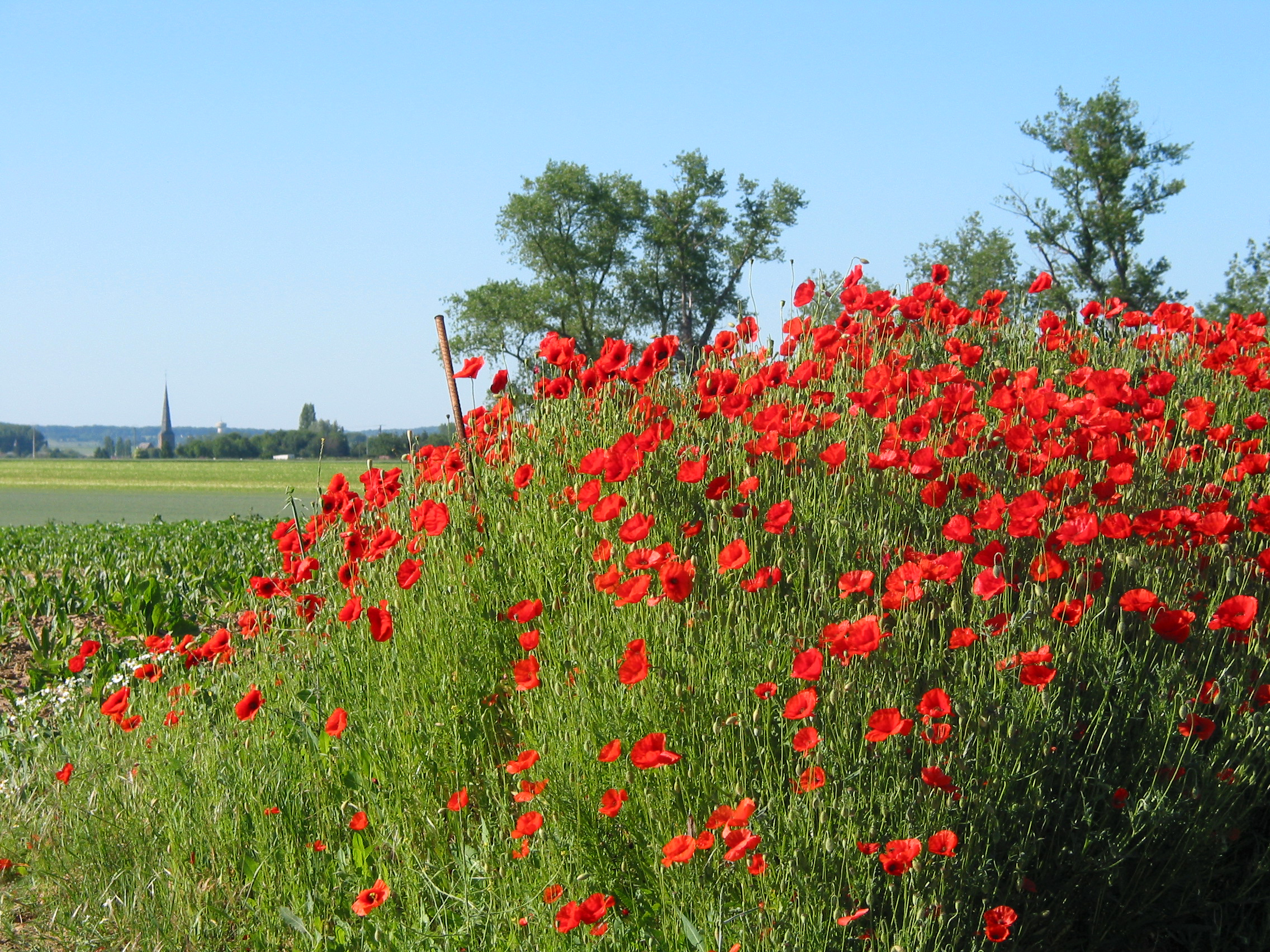- Papaveraceae
image_width = 240px
image_caption = "Papaver rhoeas"
regnum =Plant ae
divisio = Magnoliophyta
classis =Magnoliopsida
ordo =Ranunculales
familia = Papaveraceae
familia_authority = Juss.
subdivision_ranks = genera
subdivision = see textPapaveraceae is a family of
flowering plants . The family has been universally recognized by taxonomists, and is also known as the "poppy family". It is acosmopolitan family occurring intemperate and subtropical climates. Most areherb aceous plants, but a few areshrub s and smalltree s.The plants are laticiferous. All parts contain a well developed duct system (these ducts are called "laticifers"), producing a milky
latex , a watery white, yellow or red juice.The simple leaves are alternate or sometimes whorled. They have petioles and are not enclosed by a sheath. The leaves are usually lobed or pinnatifid (i.e. consisting of several not entirely separate leaflets), or much-divided. There are no
stipule s.The plants are hermaphroditic and are pollinated mostly by
insect s (even as flower nectaries are lacking) (=entomophilous ), a few by the wind ( =anemophilous ). There is a distinct calyx and corolla, except in "Macleaya" where the corolla is lacking. The flowers are medium-sized or large and they look spectacular. The terminal flowers solitary in most species. In others the terminalinflorescence is cymose or racemose. The flowers are odourless and regular.There are many
stamen s, mostly 16 to 60, arranged in two separate whorls, the outer one with stamens alternate with the petals, the inner one opposite. The gynoecium consists of a compoundpistil with 2 to 100 carpels. The ovary is superior and 1-locular. The ovary is without a footstalk (sessile) or on a short stem (stipitate).The non-fleshy
fruit is usually a capsule, breaking open at maturity to release theseed s through pores (poricidal), or through the partitions between the cells (septicidal), or by means of valves (valvular). The numerous seeds are small. Their nutritive tissue (endosperm) is oily and farinose. The fruit of "Platystemon" is aschizocarp .These plants almost all contain
alkaloid s. Many arepoison ous. The Mexican Prickly Poppy (pictured above) is poisonous if taken internally and may causeedema andglaucoma . Even if an animal, such as agoat , should persist in grazing on this plant, not only will the animal suffer but so will those who drink itsmilk , because the poisons are passed along in the milk.Taxonomy
The
APG II system (2003; unchanged from theAPG system of 1998) places the family in the orderRanunculales , in the cladeeudicots . However, APG does provide for the option to segregate two families, as optional segregate. Thus, there are two possible circumscriptions:
* Papaveraceae "sensu lato", including the plants that would otherwise form the familiesFumariaceae andPteridophyllaceae .
* Papaveraceae "sensu stricto", excluding these plants.The family "sensu stricto" conforms to the family as recognised by the
Cronquist system , of 1981 (Cronquist recognised Fumariaceae as separate). This comprises about 26 genera and about 250 species. The description given above applies to the family in this narrow sense.;Genera in Papaveraceae "sensu stricto"
*"Arctomecon "
*"Argemone " : Prickly Poppies
*"Bocconia "
*"Canbya "
*"Chelidonium "
*"Dendromecon " : Bush Poppies
*"Dicranostigma "
*"Eomecon "
*"Eschscholzia "
*"Glaucium "
*"Hunnemannia " : Mexican Poppies
*"Hylomecon "
*"Macleaya " : Plume Poppies
*"Meconella "
*"Meconopsis " : Blue Poppies
*"Papaver "
*"Platystemon " : Creamcups
*"Platystigma "
*"Roemeria "
*"Romneya "
*"Sanguinaria " :Bloodroot
*"Stylomecon "
*"Stylophorum "Cultivation and symbolism
The family is well loved for the striking flowers known as
poppy , with several species grown asornamental plant s, such asCalifornia Poppy ("Eschscholtzia californica"), the Californiastate flower . The common poppy orcorn poppy ("Papaver rhoeas") is still worn in remembrance ofWorld War I (see also "In Flanders Fields "). The family also contains theOpium Poppy ("Papaver somniferum"), which is the source ofopium andopiates , as well as most of the poppyseed s used incooking andbaking .External links
* [http://www.topwalks.net/plants/generos/papaveraceae_01.htm Papaveraceae in Topwalks]
* [http://delta-intkey.com/angio/www/papavera.htm Papaveraceae] [sensu stricto] in L. Watson and M.J. Dallwitz (1992 onwards). [http://delta-intkey.com/angio/ "The families of flowering plants"] .
* Papaveraceae [sensu lato] in the [http://www.efloras.org/florataxon.aspx?flora_id=1&taxon_id=10650 "Flora of North America"]
* [http://www.life.umd.edu/emeritus/Reveal/PBIO/pb450/magn6.html The position adopted by J.L.Reveal]
* [http://www.ncbi.nlm.nih.gov/Taxonomy/Browser/wwwtax.cgi?mode=Tree&id=3465&lvl=3&p=mapview&p=has_linkout&p=blast_url&p=genome_blast&lin=f&keep=1&srchmode=1&unlock NCBI Taxonomy Browser] [sensu stricto]
* [http://www.csdl.tamu.edu/FLORA/cgi/gateway_family?fam=Papaveraceae links at CSDL]
* [http://flowersinisrael.com/FamPapaveraceae.html Family Papaveraceae] Flowers in Israel
Wikimedia Foundation. 2010.

